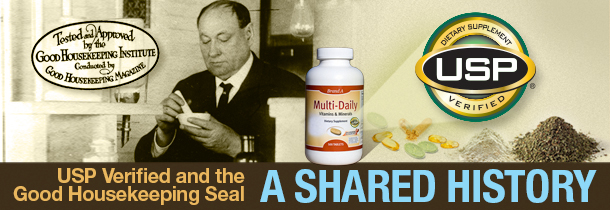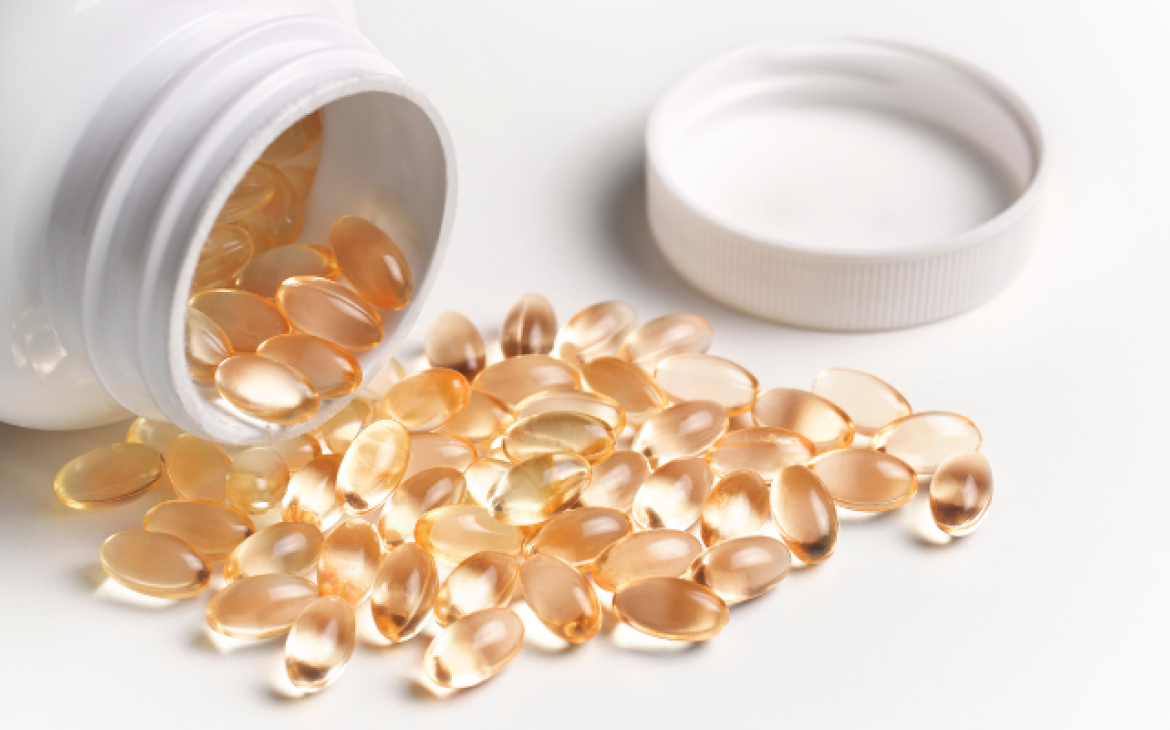
When describing the USP Verified Mark, its value and the numerous tests necessary to earn the Mark that assures consumers “what’s on the label is in the bottle”—it is not uncommon for those first learning of the program to remark that the USP Mark is “a lot like the Good Housekeeping Seal of Approval.” The comparison is perhaps unsurprising, because the two seals enjoy a shared history. Each is the legacy of the work of pioneering consumer activist and “Father of the Pure Food and Drug Act”—Harvey W. Wiley, M.D.
A Lifetime of Work in Food and Drug Safety
In 1883, Dr. Wiley began a 50-year crusade against misrepresentations in the food and drug industry at the Department of Agriculture where he was head of the Bureau of Chemistry (a pre-cursor of the Food and Drug Administration.) At the time, there was little government oversight of the drug industry and even less in the food industry. As a result, the American marketplace was flooded with poor quality and even harmful products. Some manufacturers substituted cheap ingredients for those represented on the labels. Others made products of questionable benefit or safety—such as “soothing syrups” for infants that contained morphine. Also, as new ingredients, chemical preservatives and colors (some of them toxic) were developed, it was not uncommon for manufacturers to incorporate them into their products without first testing their effects on humans.
Crusader for Consumer Protection
As an early crusader for consumer protection, Dr. Wiley became focused on developing tests to assess food purity and safety. Frustrated by his inability to convince the U.S. Congress of the need for greater regulation, Dr. Wiley assembled a group of healthy young men who volunteered to become human lab rats to help test the effects of common food preservatives, chemical additives and adulterants on humans. The group was memorably dubbed the Poison Squad by Washington Post reporter George Rothwell Brown, and the stories of their intrepid experiments made them a national sensation.
Together with the support of women’s clubs and organizations such as the Association of Official Agricultural Chemists, Dr. Wiley and the Poison Squad were able to change both public and political perception. First, they convinced large food canners to voluntarily abandon the use of questionable chemical additives and preservatives; and eventually persuaded the Congress to pass the Pure Food and Drug Act, which was based largely on written contributions from Dr. Wiley. President Theodore Roosevelt signed the Act into law in June 1906. The law elevated the public health role of the United States Pharmacopeia because it defined a drug as “all medicines and preparations recognized in the United States Pharmacopeia (USP) or National Formulary (NF),” and defined adulterated drugs as those referenced in the USP and NF but differing from “the standard of strength, quality, or purity” specified in the two compendia. Roosevelt then appointed Dr. Wiley to oversee administration of the law at the Department of Agriculture.
Independent Spirit, Uncompromising Values
Even though the Pure Food and Drug Act he championed was enacted, Wiley’s battle for consumer protection was far from over. Dr. Wiley faced adversaries both in the halls of Congress and from the food and drug industries. Frustrated by the slow pace of change, Dr. Wiley prepared to leave government to continue his crusade for consumer protection independently.
In 1910, Dr. Wiley was appointed President of the United States Pharmacopeial Convention, a post he held through 1920. As president, Wiley helped oversee revisions—additions, edits and changes—to the standards listed in the USP.
Soon thereafter, in 1912, Dr. Wiley officially resigned his government post at the Department of Agriculture and joined Good Housekeeping magazine to become the Good Housekeeping Institute’s director of the Bureau of Foods, Sanitation and Health.
There he continued his fight for tougher government oversight of food and drugs, but also conducted his own analysis of food products—especially those advertised in Good Housekeeping magazine.
The Good Housekeeping Seal
The Good Housekeeping Institute opened in 1900, and began researching and compiling “A Roll of Honor for Pure Food Products.” Any product that withstood the investigation of the Institute staff was eligible to be included in the list of "Tested and Approved" products to be published in Good Housekeeping magazine on a monthly basis.
The "Good Housekeeping Tested and Approved Seal by the Good Housekeeping Institute conducted by Good Housekeeping Magazine" was introduced in the December 1909 issue. By the end of 1910, almost 200 products, many of them various household appliances, were qualified to carry the "Seal of Approval."
In 1911, the Hearst Corporation bought Good Housekeeping and the Institute. To bolster the magazine's continued fight against misrepresentations in the food and drug industry, Hearst hired Dr. Wiley, to head the newly created Bureau of Foods, Sanitation, and Health Lab. He had been a frequent contributor to the magazine during his tenure at the U.S. Department of Agriculture, and under Dr. Wiley's direction, the "Tested and Approved Bureau of Foods, Sanitation, and Health Seal" was created to cover the food and cosmetic products that were advertised in the magazine.
The original Tested and Approved Seal gained fame as perhaps the most important guide in consumer buying. In use until 1941, the seal underscored the importance of independent third party tests and inspections and helped make quality seals a fixture of the American marketplace. A similar version is still in use today.
Meanwhile, as advances in technology and production were revolutionizing the food and drug industry, Dr. Wiley’s Pure, Food and Drug Act soon provided insufficient protection for the public. So in 1938, Congress passed the Federal Food, Drug and Cosmetic Act (FDCA). As with Dr. Wiley’s Act, the FDCA recognized the United States Pharmacopeia and National Formulary (USP–NF) as “official compendium” and gave greater oversight and enforcement responsibilities to the U.S. Food & Drug Administration (FDA). Over the years, the FDCA has been amended in response to new threats to public health.
In 1994 the FDCA was amended to include the Dietary Supplement Health and Education Act (DSHEA), which established the regulatory framework for dietary supplements. DSHEA recognized the USP–NF as the official compendia for dietary supplements, but made compliance with USP–NF quality standards voluntary for supplement manufacturers.
Unfortunately, some unscrupulous manufacturers have exploited the regulations of DSHEA. The result is a marketplace reminiscent of some of the same challenges Dr. Wiley encountered—products of questionable quality and safety, including products with ingredients not listed on the label and products containing active drug ingredients and/or banned substances. Today, it can be difficult for consumers to distinguish quality dietary supplement products from poor quality products in the marketplace.
USP Verified Mark—Making Dietary Supplement Quality Visible
In 2001, dietary supplement manufacturers asked USP to help. Inspired by the work of Dr. Wiley, his independent spirt and the uncompromising values he and countless other volunteers have helped instill in USP, USP created the USP Verified Program—a voluntary independent third-party program to verify the quality of dietary supplements. Manufacturers whose supplements meet USP’s demanding criteria and carry the USP Verified Mark on the product label demonstrate a deep commitment to good quality.
The USP Verified Mark means the dietary supplement contains the ingredients listed on the label, in the declared potency and amounts; that it does not contain harmful levels of specified contaminants; that it will breakdown and release ingredients into the body within a specified amount of time, and that it has been made according to FDA and USP Good Manufacturing Practices (GMPs), using safe, sanitary and well-controlled processes.
So, look for the USP Verified Mark when shopping for dietary supplements and be thankful for the work of Dr. Harvey Wiley, a pioneer in consumer protection and food safety.


